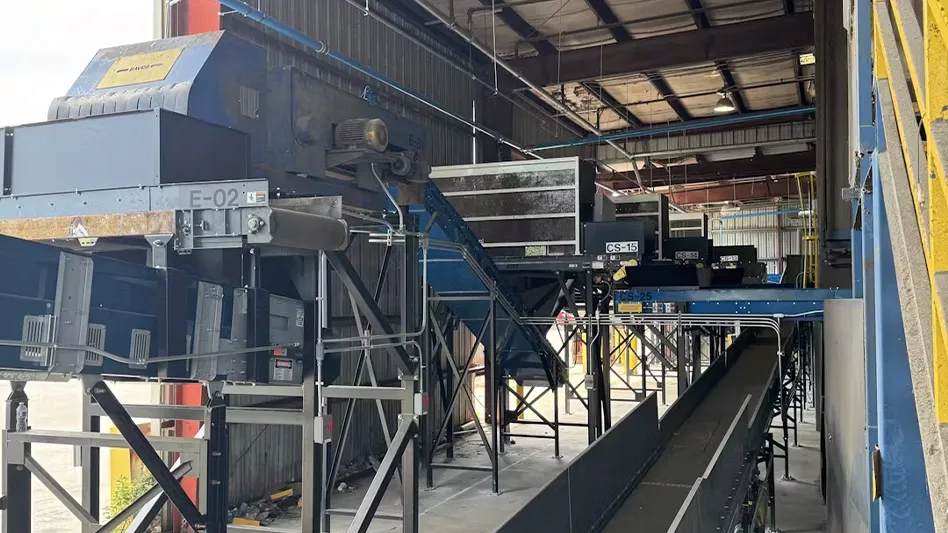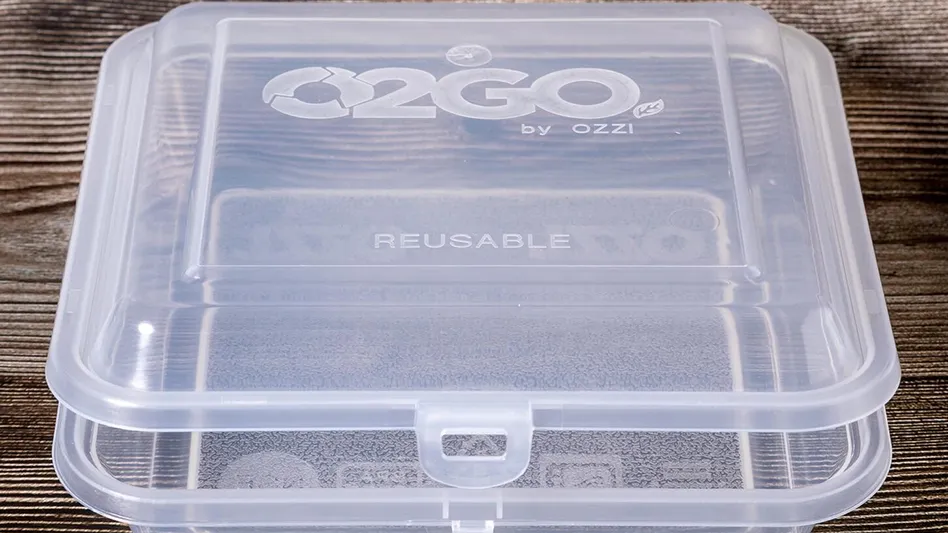 Missouri proudly wears its skeptical nature on its sleeve, with its long-standing “Show Me State” slogan tracing back to the 19th century.
Missouri proudly wears its skeptical nature on its sleeve, with its long-standing “Show Me State” slogan tracing back to the 19th century.
But if there had been initial skepticism toward the use of recycled materials in paving mixtures in the state, it has largely been overcome. Missouri contractors have adapted to concrete and asphalt pavement recycling methods, and also to the widespread use of scrap asphalt shingles into paving mixtures.
Thanks in part to support from the Missouri Department of Transportation (MoDOT), more than 50,000 tons of asphalt shingles were used in MoDOT paving applications in 2009—one part of a much larger recycled-content paving sector in the Show Me State.
GREEN PURSUITS
Visitors to the MoDOT Web site should not have a difficult time finding what the agency is doing to promote recycling. Much of the information can be found on a page at www.modot.org/goinggreen/.
The agency also gathers and reports information on its use of recycled materials. In April of 2010, it announced it saved an estimated $20 million in 2009 on resurfacing projects in which recycled asphalt was used in hot mix asphalt. MoDOT calculates that in 2009 it used 500,000 tons of reclaimed asphalt pavement (RAP) through the Hot In-Place Recycling process. Additionally, the agency purchased and used paving materials in which 53,000 tons of recycled asphalt shingles (RAS) were used.
| ADDITIONAL EFFORTS |
|
The Missouri Department of Transportation (MoDOT) has been able to advocate for and support the recycling of several materials in addition to asphalt shingles. MoDOT Field Materials Engineer Joe Schroer says that, in some cases, such as with concrete and asphalt pavement recycling, the private sector did not particularly need help with developing the market. A major concrete recycling effort has been undertaken as several lane miles of Interstate 64 west of St. Louis have been reconstructed, says Schroer. “Recycling was mainly driven by the forces that designed and constructed the project,” he comments. “I think they saw that they were going to have a large demand for material on the project, plus they were going to have such a large amount of scrap material. They were able to cut their costs for material by reusing the concrete from the pavement and the other structures, such as bridges.” MoDOT estimates that some 325,000 tons of concrete were recycled, primarily on site, as a result of the project. The agency has been approached about the use of scrap tires within paving mixtures as well, says Schroer, by one contractor in particular. “A contractor and the state Department of Natural Resources came to us and said they had a different way of using the rubber in the asphalt mixture that they think will perform better than what we have seen in the past.” Schroer says some earlier pilot projects showed that the rubberized pavement was having difficulty retaining its integrity through the freeze-thaw cycles that are common during the fall and winter in Missouri. The new process, he says, is designed to create a chemical bond that will better endure the freeze-thaw cycle. Current thinking within MoDOT, says Schroer, is to allow the contractor and its research partner to determine the future of the process. “I think the contractor will decide and let cost drive it. If polymer prices continue to go up, the contractor will probably pay more attention to recycling,” he comments. The agency provides some additional incentives toward recycling, however, as it announced in June 2009 with its “green credit” program. In this process, “green credit” values (and accompanying reward payments) for the use of various environmentally friendly practices such as recycling, reducing pollution and using alternative fuels can be earned by contractors on MoDOT projects. |
“Beyond the cost savings, the environmentally friendly effort reduced the amount of petroleum MoDOT used in its road construction program by 20 percent and significantly cut down the amount of shingles that went into Missouri landfills,” the agency commented in the news release announcing the 2009 figures.
Joe Schroer, a MoDOT field materials engineer, says the agency asked him to begin investigating the use of both RAP and RAS in 2003. He found that most contractors were already comfortable using RAP and were doing so in much of their commercial work.
The RAS market, on the other hand, was less developed. “I checked with other state DOTs who had specs, and many of them had those specs in place for years but still considered the process experimental,” recalls Schroer.
“But we built on other research, figured out a few things, had a pilot project and put together a spec,” he adds.
With a specification in place, Schroer and MoDOT next engaged with the state’s paving contractors to develop the recycling process and the market.
HEALTHY ALLIANCES
The agency’s emphasis on recycled-content purchasing has also helped to develop the state’s recycled-content paving materials infrastructure. In 2008, according to MoDOT, “there were only about a half-dozen shingle suppliers and contractors using or furnishing the recycled roofing material in Missouri.”
Schroer says expanding that roster of companies involved overcoming a “wait-and-see attitude” that perhaps fits in with the Show Me State slogan.
“When MoDOT first began to allow recycled asphalt shingles to be added into hot mix asphalt, many contractors were leery about how well the product would hold up on the road,” says Schroer. “It didn’t take long for that mind-set to change. Now contractors are stepping up their use of recycled materials to be able to compete for jobs.”
On the MoDOT Web site, 16 companies are listed as recyclers of shingles while a separate list contains 13 companies referred to as paving contractors using shingles. (Several companies appear on both lists.)
Contractors may have initially used the material to remain eligible for MoDOT jobs, but they also have become convinced the use of shingles is viable, the agency contends. “The asphalt mixture has proven to be very durable, more rut-resistant and lower in cost—factors that can't be ignored in a highly competitive contracting environment,” according to MoDOT.
A video clip on the agency’s Web site features Steve Jackson of paving company N.B. West Contracting Co., St. Louis. In the clip, Jackson displays what the recycled shingle-content paving mixture looks like and comments on the logic behind using shingles.
“Instead of all these shingles going off and being pushed into a landfill, we are now capturing them,” says Jackson. “We have roofing contractors who bring them in to our plant. We grind them up to a usable size that allows us to the get the most oil out of them that we possibly can, and then we reuse that in our roads.” Schroer says that MoDOT’s shingle recycling initiative coincided nicely with a spike in oil and liquid asphalt binder prices. “Just about the time the contractors became more comfortable with using the shingles and seeing how it worked during placement, the price of asphalt started to escalate,” he comments. “So we pretty quickly went from a couple of collectors and contractors to collection sites statewide and just about all of our major contractors using shingles.”
In the same online video, MoDOT’s Schroer comments that the agency currently uses shingles in an estimated 80 percent of the paving mixtures it purchases.
Like MoDOT, N.B. West Contracting publicizes its recycling practices. On the company’s Web site (www.nbwest.com) the chasing arrows logo and the slogan “Go Green with West” are prominently displayed.
Text on the site states, “West Contracting has invested heavily in ensuring we preserve our resources and protect the environment. West operates a pavement roto-milling machine [that] removes existing asphalt pavement from roadways. The asphalt is ground into a small size that then can be used by our asphalt plants to produce recycled pavement products.”
The company also notes, “All three of West Contracting’s asphalt plants use RAP as well as RAS (recycled asphalt shingles) in our asphalt mixes, giving our customers a quality product while protecting the environment.”
N.B. West’s phrasing also refers to the “win-win” economic and environmental benefits of its processes. “Recycled asphalt pavement reduces the use of virgin materials and preserves landfill space. Taxpayers benefit by stretching tax dollars, and this allows state and local governments to keep more roads in better condition.”
COMMON PRACTICE
Schroer says earlier in his 27-year MoDOT career, he did not see himself as someone who would be focusing on recycling as a major part of his work.
“Twenty, 15 or even 10 years ago, I wouldn’t have seen that,” he comments. “But one thing begets another. We started with the shingles, and from that point I’ve kind of inherited the in-place and the RAP and tires and all the other items we’ve been working on.” [See Sidebar “Additional Efforts” on page 62.] Schroer’s efforts on behalf of the shingle recycling market seem to have helped the material to establish a strong foothold in the Show Me State.
“Actually, I think there is more demand than availability right now,” he comments. Schroer says the economy may be one factor, but an absence of severe weather has been another. “A good hailstorm usually brings with it an abundance of tear-off shingles.”
The state’s contractors rely on tear-off shingles and job site trimmings for 90 percent of their feedstock, Schroer estimates. He says Missouri has just one asphalt shingle manufacturing plant, so one contractor near Joplin benefits from that incoming stream.
From what Schroer hears from paving contractors, shingle recycling is now common practice not because of the state support, but because the economics of it have been proven.
“As the contractors became more comfortable with its use, the other ones found that to compete they were going to have to kind of jump on the bandwagon,” says Schroer. “That has been one of the big drivers—remaining competitive.”
The author is editor-in-chief of Recycling Today and can be contacted at btaylor@gie.net.
ASPHALT SHINGLES AT A GLANCE
|
RECENT PRICING HISTORY |
MAJOR END MARKETS |
FLOW PATTERNS |
SUPPLY & DEMAND FACTORS |
|
Shingle manufacturing plants and roofers pay a tipping fee to recyclers, sometimes on a par with landfill fees or from 20 to 60 percent less. |
Size-reduced asphalt shingle pieces can be used as an aggregate substitute in asphalt paving mixtures, as base course or to make temporary roadways. |
Size-reduced asphalt shingle pieces can be used as an aggregate substitute in asphalt paving mixtures, as base course or to make temporary roadways. |
Size-reduced asphalt shingle pieces can be used as an aggregate substitute in asphalt paving mixtures, as base course or to make temporary roadways. |

Explore the June 2010 Issue
Check out more from this issue and find you next story to read.
Latest from Recycling Today
- Meeting the decarbonization challenge
- Cyclic Materials expands leadership team
- Paper cup acceptance at US mills reaches new milestone
- EPA announces $3B to replace lead service lines
- AMCS showcasing Performance Sustainability Suite at WasteExpo
- New Way and Hyzon unveil first hydrogen fuel cell refuse truck
- Origin Materials introduces tethered PET beverage cap
- Rubicon selling fleet technology business, issuing preferred equity to Rodina Capital





